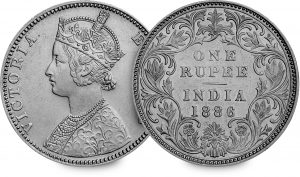Posts Tagged ‘India’
How a young queen saw the world without leaving Europe…
Despite ruling over 400 million people in an empire that covered almost a quarter of the world’s surface, Queen Victoria had never set foot in many of the countries that she ruled over.
For many of those people, the only way to catch a glimpse of their empress was by looking at the portraits on the coins that passed through their hands every day. These coins formed a vital connection between people, even though they may have lived on opposite sides of the world and experienced very different lives.
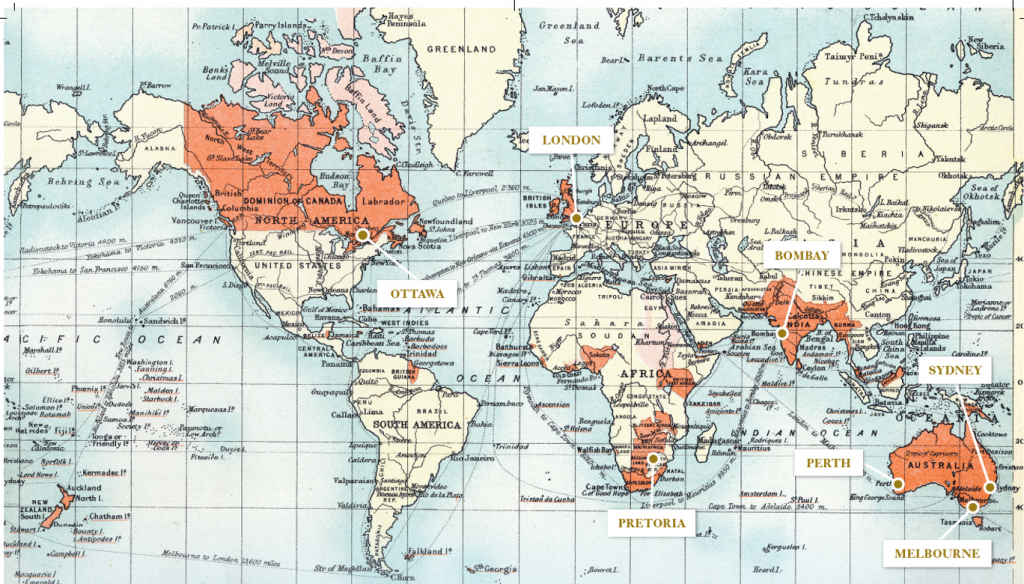
India became known as the Jewel in the Empire’s crown, and was so important to Victoria that she was awarded the title of the “Empress of India” in 1876. Although she never stepped foot in the subcontinent, the currency of India (the rupee) was minted with her portrait on from 1840, so people could recognise their empress despite living 4,500 miles away!
The rupee is one of the oldest currencies in the world, so to feature a British monarch for the first time was an important moment in numismatic history. The later portrait issued on rupees was similar to the Gothic Head effigy can be considered one of the most beautiful coins of the empire.
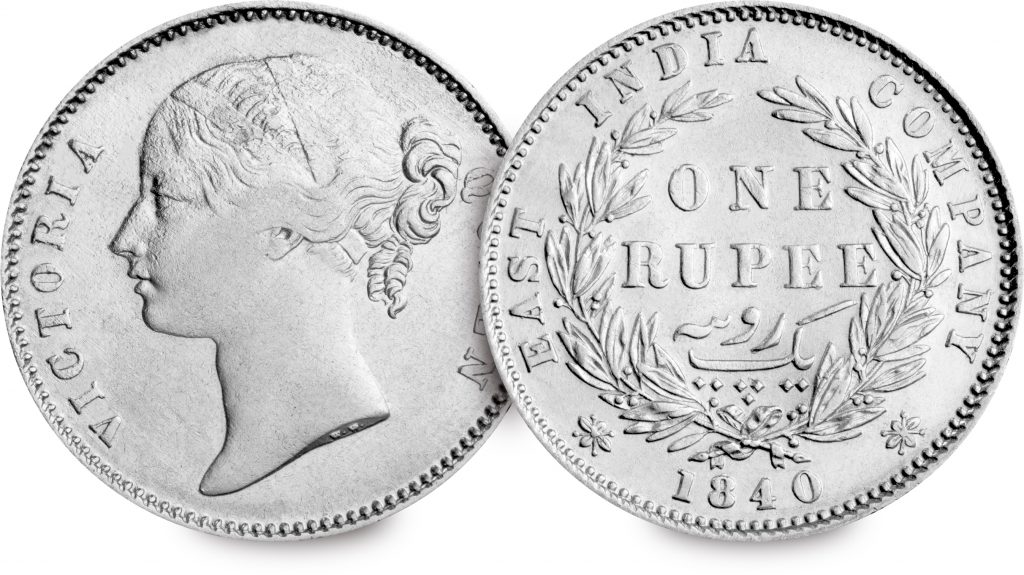
1840 Indian Rupee 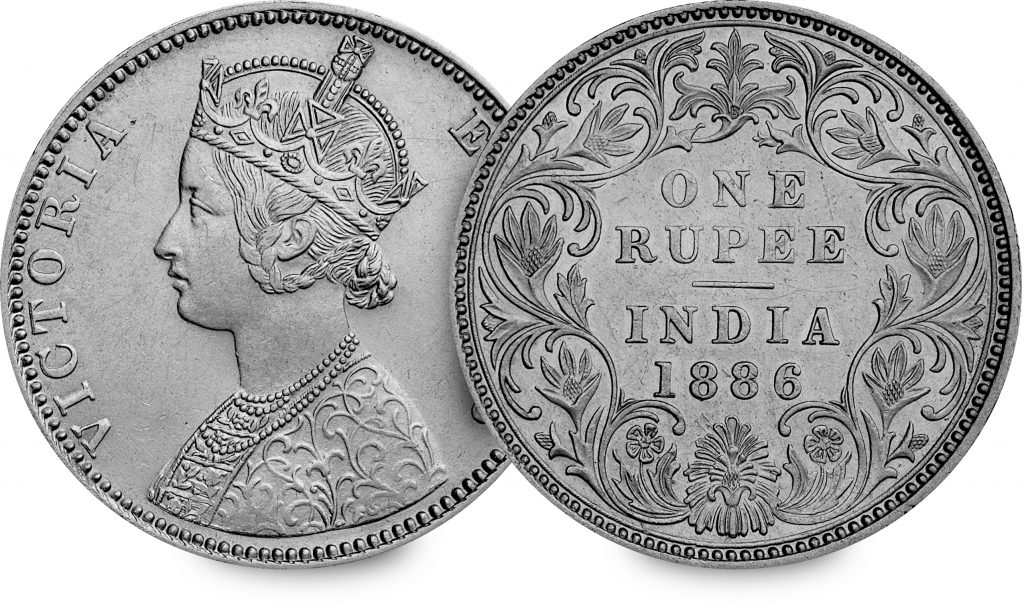
1886 Indian Rupee
Another numismatic first took place in Australia in 1855, one more country that Victoria never visited (which is hardly surprising as it would have taken her almost two months to get there!). As the empire grew, so did the need for coins and the Royal Mint opened branches in Australia to mint sovereigns for the empire. In 1855 the first ever sovereign to be minted outside of the UK, the Sydney sovereign, was issued. It featured a portrait of Victoria that was based on the Young Head effigy, but with a sprig of banksia weaved through Victoria’s hair, giving the portrait a distinct Australian feel.
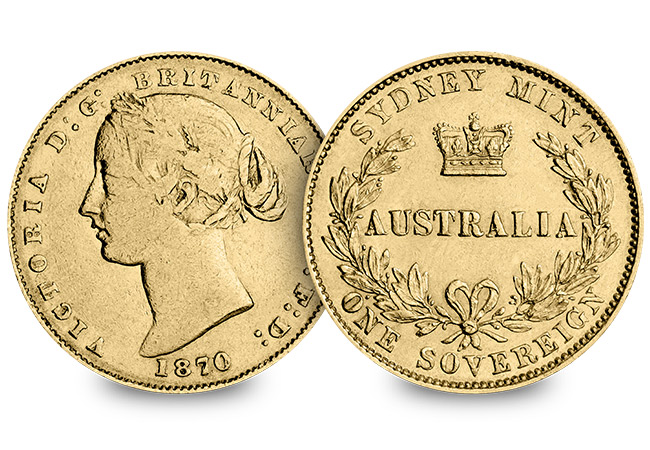
A number of Royal Mint branches were opened throughout Australia after the success of the Sydney sovereign. To identify the mint that sovereigns were produced in, mintmarks were added to the coins, with a small ‘P’ for Perth, and an ‘M’ for Melbourne. The sovereign became legal tender in the majority of British colonies in the 1860s, and its importance in British trade, and worldwide circulation earned it the title “the King of Coins”. By the final years of the British Empire, the sovereign was minted in four continents across the globe.
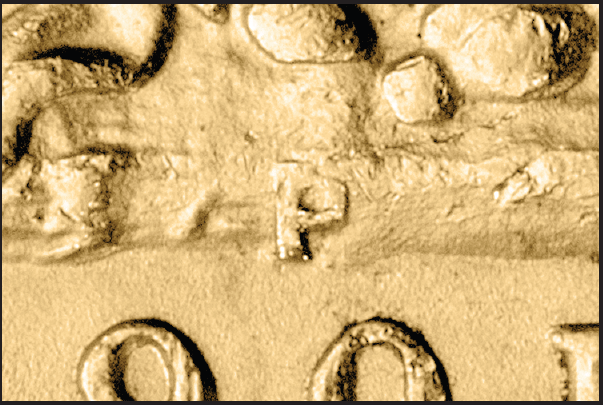
‘P’ Mintmark for sovereigns minted in Perth 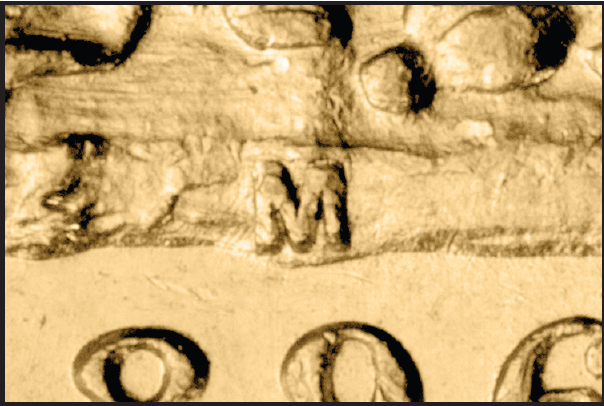
‘M’ Mintmark for sovereigns minted in Melbourne
India and Australia weren’t the only countries that saw Victoria’s portrait. Her image also reached as far as Hong Kong, Ceylon, East Africa and New Zealand. In 1870 the first Canadian dollar with Victoria’s portrait was issued, taking Victoria’s image to a new side of the world for people to see.
Victoria never left Europe, but her portrait and image stood strong on coins around the world. Whilst she never stepped foot in many of the countries that she ruled over, that didn’t stop people recognising her image around the world. The coins that they used every day provided a link to the empire that they were a part of, despite the miles between them.
If you’re interested
You can now own a genuine Victorian Silver Rupee, minted over 4,500 miles away! Click here for more info>>>>
Discover the coins that built the British Empire
The East India Company is living proof of Sir Walter Raleigh’s (1614) prophetic words: “whosoever commands the sea, commands the trade, whosoever commands the trade of the world commands the riches of the world and consequently the world itself,” as they rapidly became a trading force to be reckoned with.
And coins were one of the key ways the company managed trade across the globe.
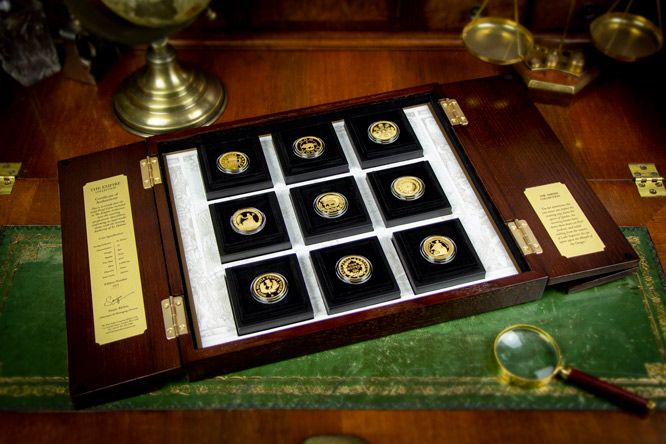
At its peak the EIC was single-handedly responsible for half the world’s trade, including cotton, silk, spices, opium and tea.
Remarkably, the East India Company is still trading today. And they have just authorised a set of limited edition Gold coins paying tribute to the most important coins in their history.
Here is the story behind the coins…
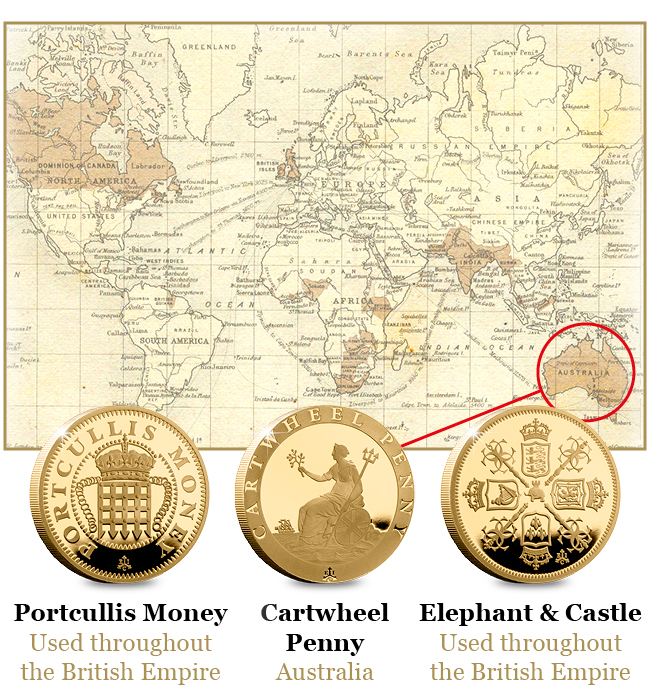
Portcullis Money – 1601 (Throughout the Empire)
Ordered by Queen Elizabeth I to facilitate increased commerce on behalf of the British Crown and to compete against the widely used Spanish Real. These were the first coins issued for the British Empire outside of England’s normal coinage.
The Cartwheel Penny – 1797 (Australia)
The Cartwheel Penny was the first British coin to be exported to Australian Colonies. It was introduced to help curb Britain’s chronic coin shortage which was impacting economic growth. Specially designed to prevent counterfeiting, and the thick rim and inscription led to the pennies being informally named ‘The Cartwheel Penny’.
The Elephant and Castle Guinea – 1663 (Throughout the Empire)
The guinea is regarded as the most successful trade coin, exponentially increasing British and local trade wherever it was introduced. This Guinea was the first British machine-struck coin, and adopted its name from where the gold was mined from.
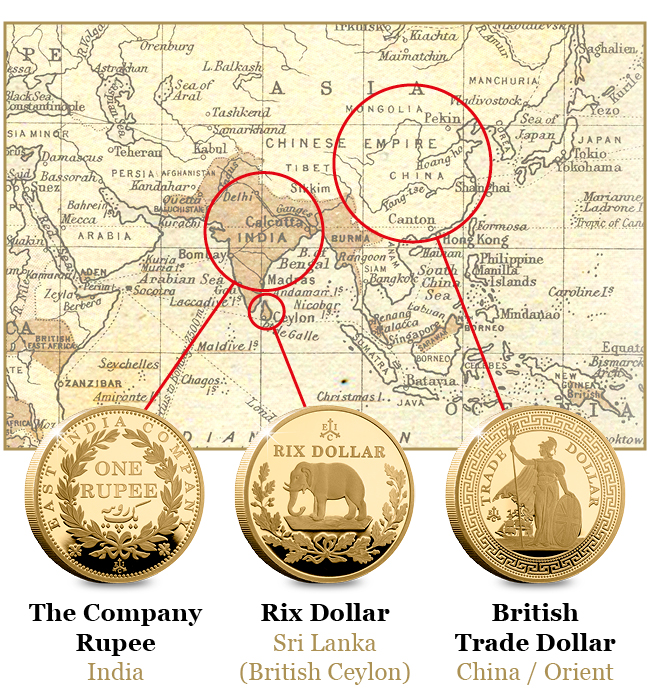
The Company Rupee – 1833 (India)
The Rupee is one of the world’s oldest systems of money. It was adopted by the East India Company upon its arrival in the East, and soon became one of the company’s most important coins and means for trade. In 1833 reforms to the Indian weights and measures led to coinage in India changing from the Sicca to the standard ‘Company Rupee’.
The Rix Dollar – 1821 (Sri Lanka)
Great Britain sought to develop Ceylon’s (Sri Lanka’s) economy and increase trade to and from Europe. As a part of this aim The Rix Dollar was struck specifically for use in Ceylon. Designed by Benedetto Pistrucci, who is also responsible for the now iconic rendition of St. George slaying the Dragon which features on British Sovereigns.
The British Trade Dollar – 1839 (The Orient)
To facilitate the trade of their most lucrative commodities, namely tea and opium a trading post in Canton, China was established. During the Trade Wars Great Britain found itself having to rely more and more on its own silver coinage, and this paved the way for one of the most distinctive silver British coins in numismatic history to be struck: the British Trade Dollar.
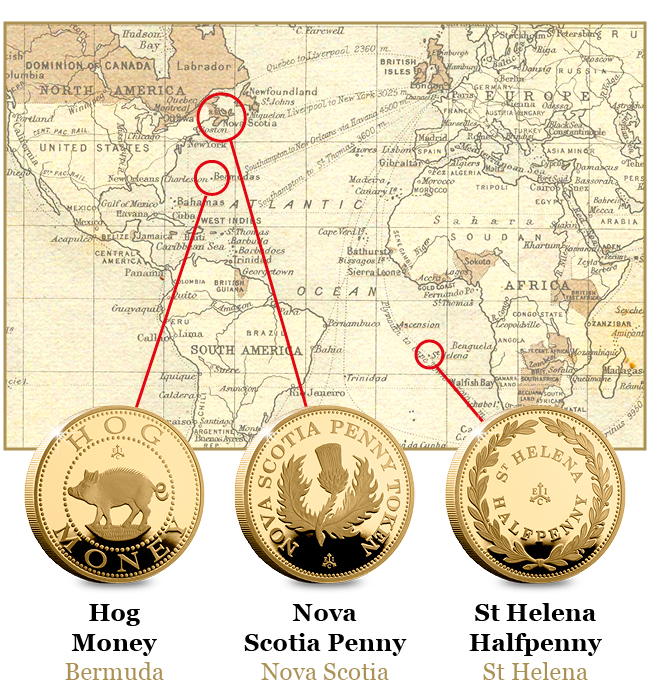
Hog Money – 1609 (Bermuda)
In order to develop Bermuda’s prosperous economy King James I granted permission to mint coins, which resulted in the issuing of Hog Money, inspired by the wild hogs previously introduced to the island, it’s the first English coin to be minted specifically for use in North America.
The St Helena Halfpenny – 1821 (St Helena)
In 1815 St Helena’s economy benefited from the arrival of the former French Emperor, Napoleon, during his second exile, as the famous prisoner brought with him an entourage of British troops, effectively doubling the islands population and prosperity. As the economy swelled, St Helena’s first local coins were introduced.
The Nova Scotia Penny – 1823 (Canada)
Prior to the Canadian Confederation in 1867 many provinces issued their own coinage. However in 1823, without seeking official approval from the Home Office, the province of Nova Scotia ordered the issuing of coins. The coins, issued in denominations of one pennies and halfpennies, contributed to the expansion of local commerce in Nova Scotia.
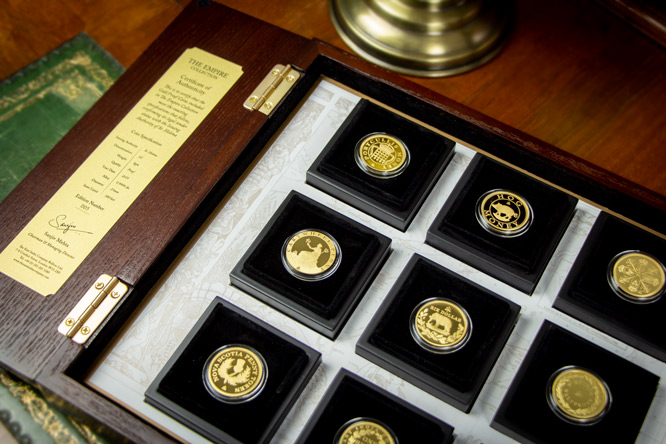
The 2019 Empire Collection
For this exceptional 2019 issue collectors will be taken on a journey to the far flung corners of the world. Retracing the steps of the East India Company, to discover some of the most significant coins which have helped build an empire stretching across three centuries from 1600 to the Victorian Era.
Finished to an exceptionally high standard, the 2019 collection truly represents the global resonance of The East India Company and these significant coins. There is no doubt the 2019 Empire Collection is going to become a future collector priority.
If you are interested…
Out of a Worldwide edition limit of just 100 we have a small stock of the 2019 Empire Collection available. If you are interested in owning a set – please complete the form below and we will contact you directly.

